Across Ocean Systems expands product line with NMEA 2000 AC and DC measurement options
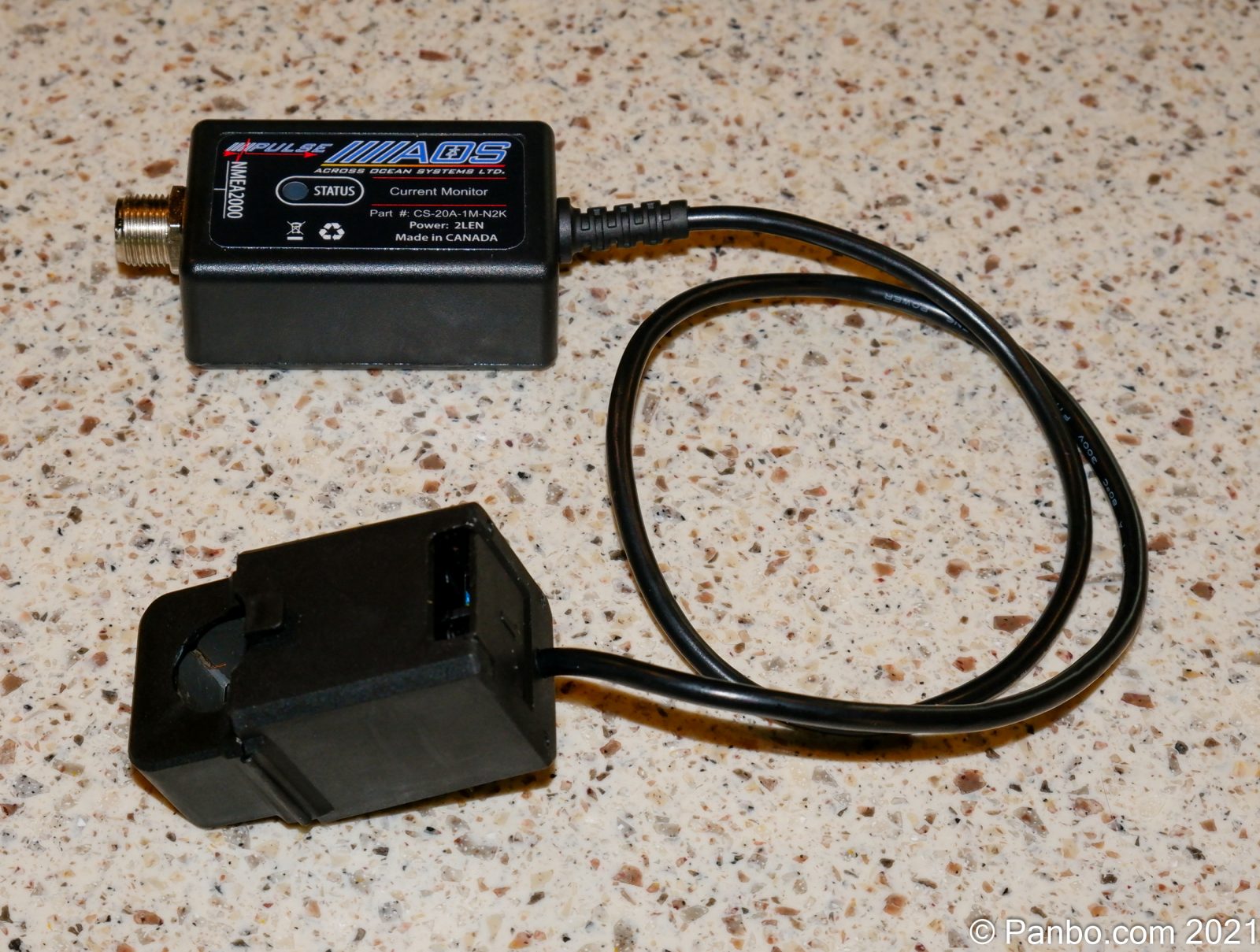
Despite a rocky start, Ben Ellison wrote enthusiastically about Across Ocean Systems (AOS), their NMEA 2000 pressure sensors, and their clever WiFi configuration. AOS has followed their pressure sensors with a suite of electrical monitoring devices to help boaters better understand and track their electrical systems. It’s exciting to see a new company build a product line of clever devices to solve problems for boaters.
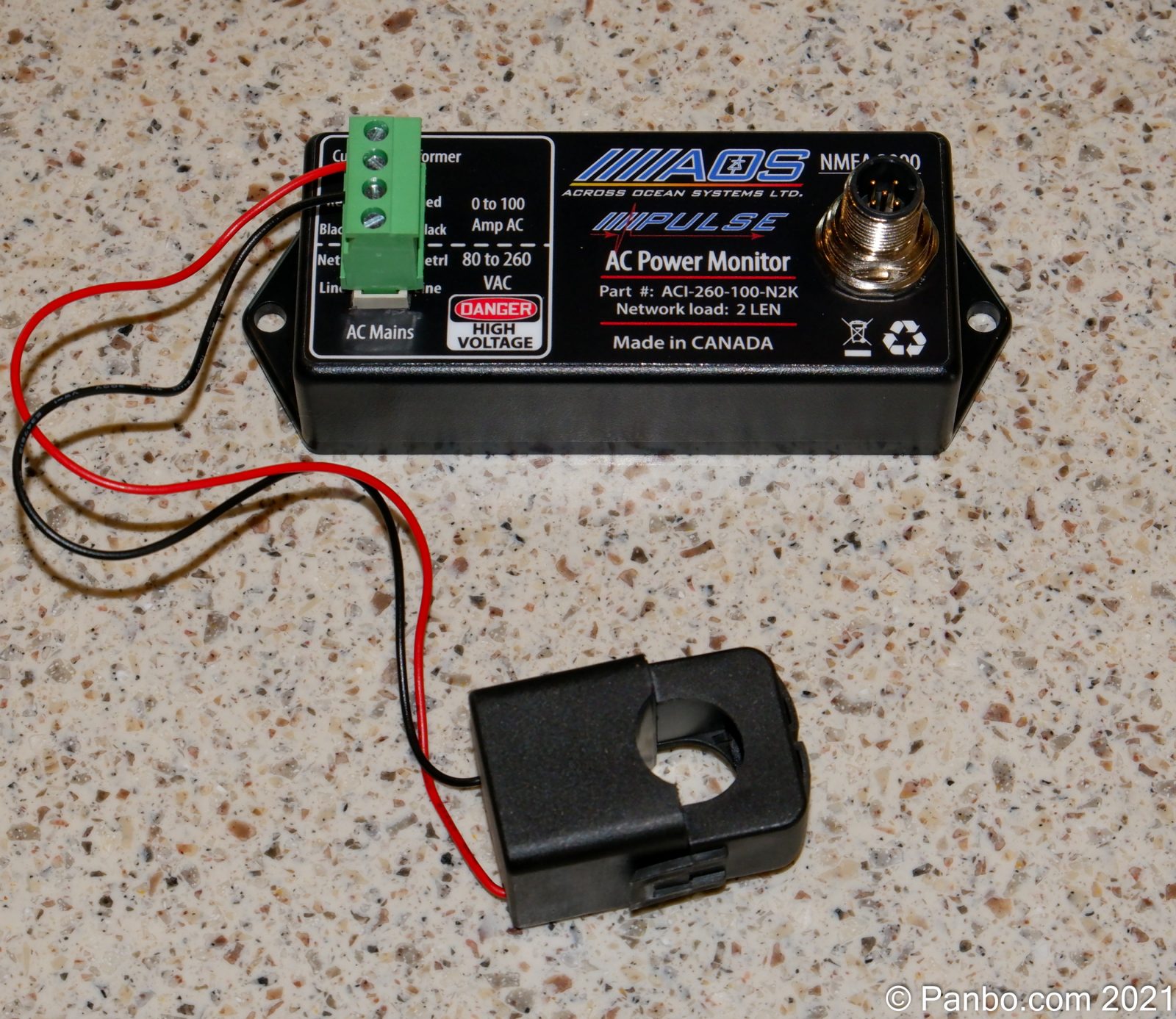
Across Ocean Systems recently introduced NMEA 2000 AC / DC current monitors (not yet on their website) and the AC Power Monitor. The $189 AC / DC current monitor measures current for either alternating or direct current circuits. It’s available in 10, 20, 50, 100, and 200 amp ratings. The $249 AC Power Monitor is a full AC circuit monitor measuring current, voltage, frequency, and calculated power. The ACM includes a 0-100 amp current transformer but higher current options are available.
Like their pressure sensors, the electrical sensors include a WiFi radio and web server built into the device, which makes configuring them a breeze. Plus, with WiFi configuration, you don’t need a brand-matching NMEA 2000 display or gateway.
You might be wondering why you care about power consumption on a circuit. The answer could be as simple as you’re a geek and you want to know (that’s frequently my answer). But, it could also be because measuring the power consumed can tell you a lot about a load.
Let’s take the example of a bilge pump. During normal operation, let’s say your pump should draw 5 amps. If it draws five amps for a minute or two and only runs every few days, all is well. But, what if it draws 5 amps and runs for 20 minutes every hour? Sounds like you’ve got a big leak and should know about it right away. How about if it runs continuously, but it’s only drawing 1 amp? That’s a hint that the pump is free-wheeling by running but not pumping any water. Perhaps because of a stuck float switch. How about if it runs continuously and draws 10 amps? That’s probably a jammed pump. Frequently caused by debris sucked up from the bilge and jammed in the pump. If you don’t catch that pretty quickly, your pump will either blow a fuse or burn itself up.
AC / DC Current Monitor
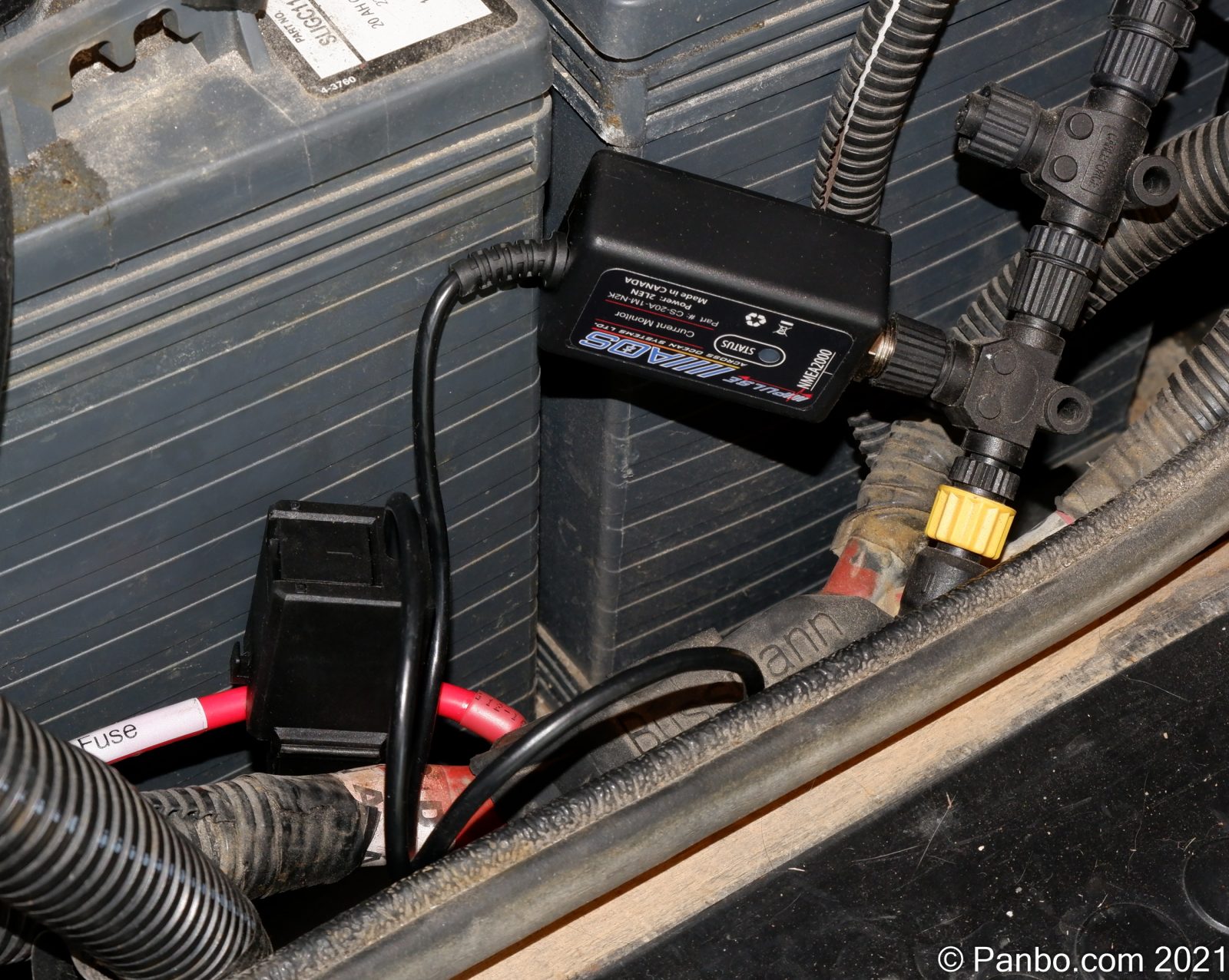
The AC/DC current monitor uses a Hall effect sensor to measure current traveling through a wire without cutting wires or breaking connections. A Hall effect sensor only goes around one wire in a circuit, either positive or negative in a DC circuit and hot or neutral in an AC circuit. To measure current in a 240v circuit with two hots you would either need two sensors or, if you know the load is balanced on both hots, you can measure one and tell the sensor to double the values.
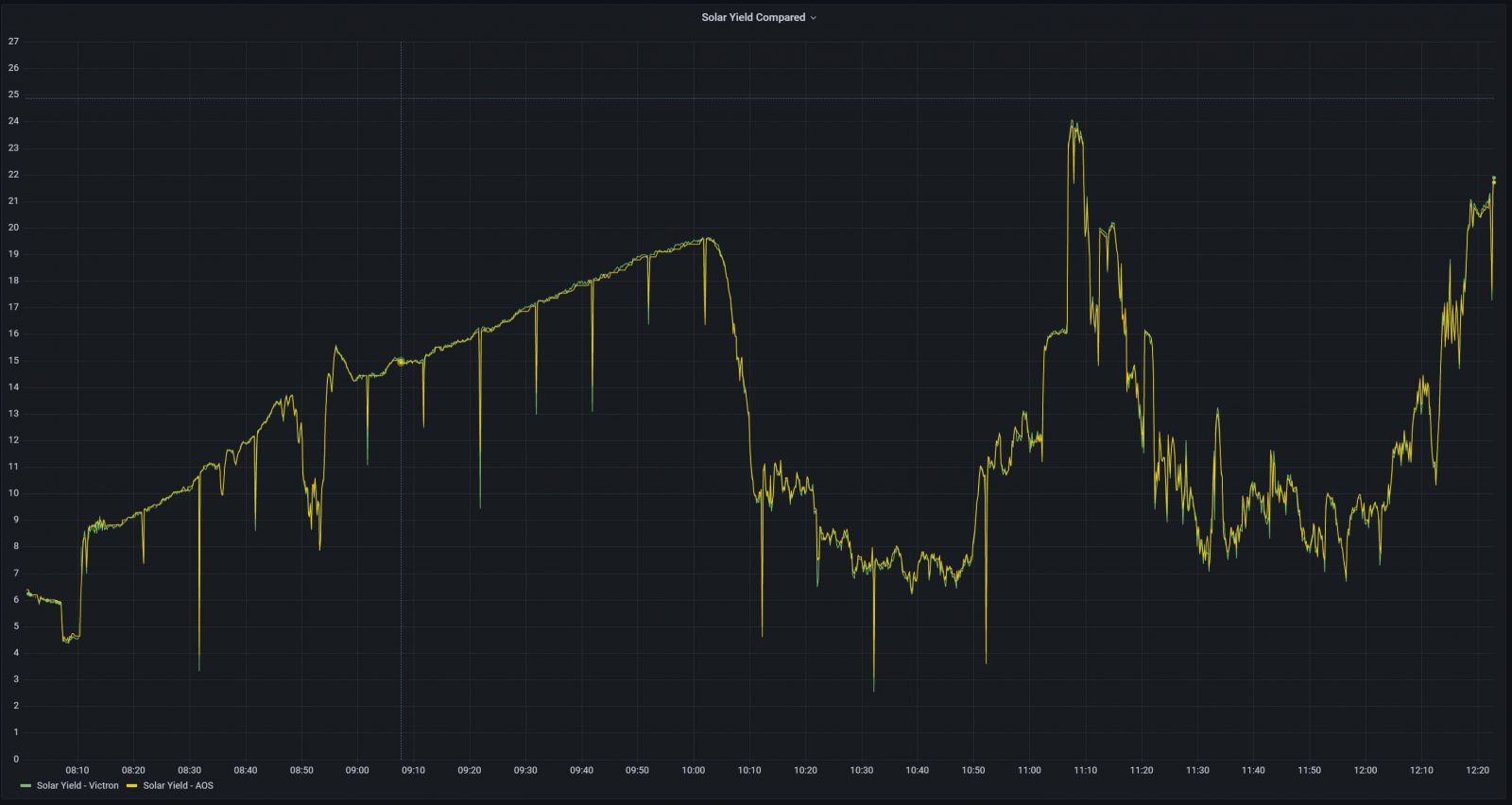
I’ve been monitoring the output of the Victron MPPT solar charge controller on Harvey using the current sensor. This seemed like a good test because the Victron controller, paired with Venus OS running on a Raspberry Pi already measures output current. So, I can compare the results as measured by the charge controller itself and the AOS Hall sensor. The results in the graph above are so close that you may barely notice there are actually two lines being graphed. The yellow line is solar yield measured by the AOS current sensor and the green line is measured by the charge controller.
Hall effect sensors (and the current transformers used by the AC monitor) wrap around a wire and measure without cutting into the wire. And, AOS includes split sensors so you can clip them around an already terminated wire. Currently, aboard Have Another Day I monitor my bilge pumps with Yacht Devices Run Indicators (YDRI). These work very well, but, in order for them to measure current, you have to run the circuit through in and out contacts on the YDRI. For a critical load like a bilge pump, I would prefer not to complicate the wiring of the circuit any more than absolutely necessary. The AOS current sensor allows monitoring without introducing more potential failure points.
Configuring an AOS sensor begins with enabling the WiFi radio. It may seem odd that WiFi isn’t always on, but since it’s only needed for configuration it is left off to save power unless you’re actively configuring. WiFi is enabled by powering on the device, waiting for it to enter a specific blink pattern, then power cycling the device again. By default, the device will create its own network, but if you’d prefer you can set it to join an existing network. Once you’re connected to the device you get a quick overview of its measurements and then the ability to configure the device and calibrate the sensor.
I’ve tested devices with lots of different configuration methods including onscreen on an MFD or display of the same brand, PC gateways, and software, text files, buttons with convoluted press sequences, and more. I really appreciate the simplicity of the web-based menus. In fact, AOS’ configuration approach is up there with my favorite, Victron’s Bluetooth configuration via their app. Plus WiFi gives longer range than Bluetooth.
The current sensor is a nicely simple product but, along with that simplicity comes with a streamlined set of features. The current sensor doesn’t measure voltage, which can be critical for some monitoring applications. Additionally, it doesn’t offer the battery monitoring functions that a device like Maretron’s DCM1000 does. It’s also worth noting that, unlike the YDRI, there’s no alarming built-in. But, there are plenty of options for triggering alarms based on values reported by the current sensor. I’m a big fan of the power, flexibility, and low cost of SignalK Server and Node-Red to collect and alarm on the values.
AC Power Monitor
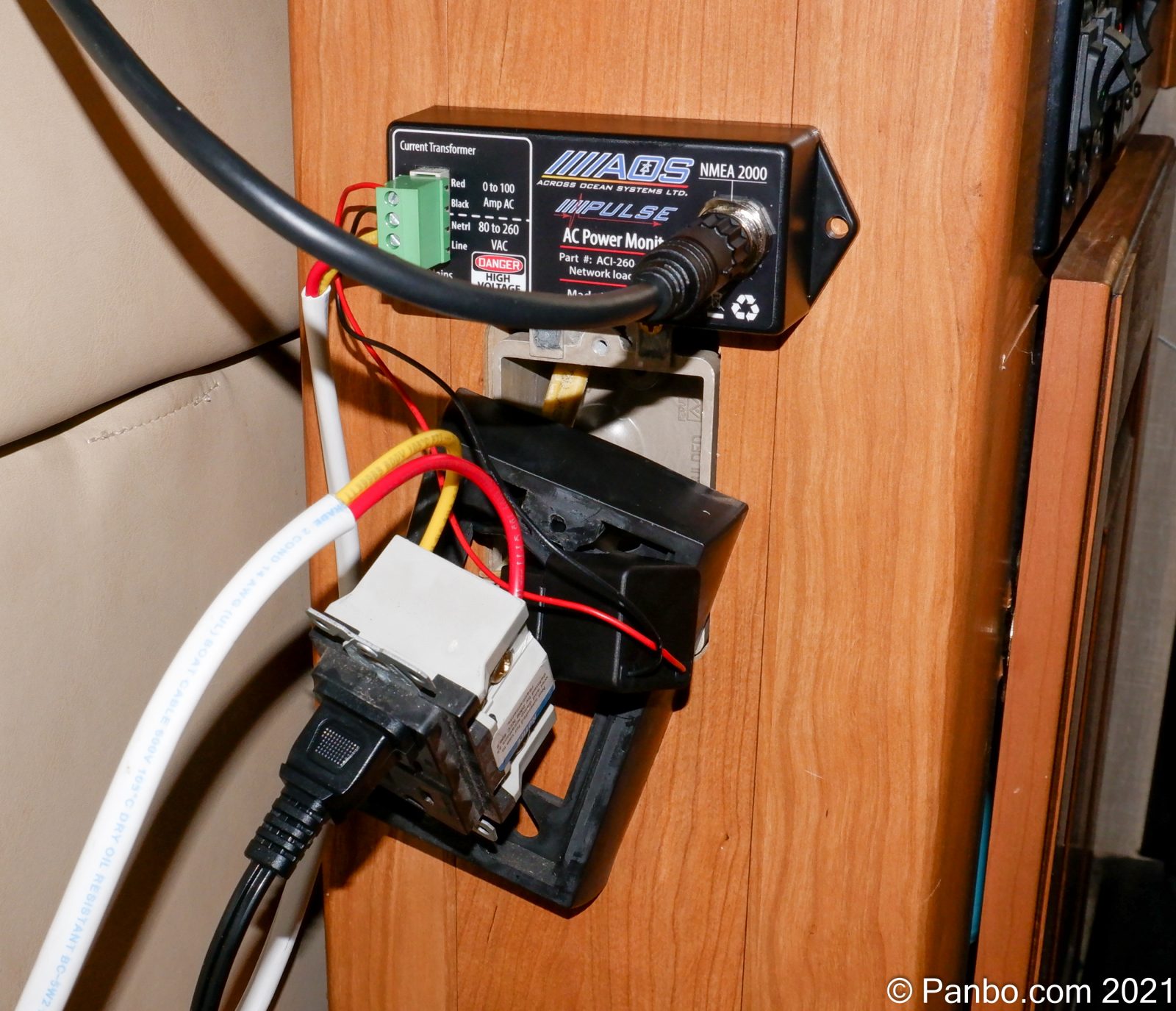
The AC Power Monitor is a full-function, affordable monitor capable of measuring current, voltage, frequency, and calculated power (volts times amps = watts). Like its siblings, it has a WiFi radio and web-server built-in. But, unlike the other modules, it doesn’t have a status LED. AOS says the lack of LED is because of the device’s design that isolates low voltage components from high voltage. I’m not sure I follow that reasoning but I did miss the LED.
Like the AC/DC current sensor, the AC Power Monitor offers web-based configuration of its settings. You can adjust the instance information, descriptions, calibrate the sensors, and more via a standard web browser. Other sensors use the status LED’s blink sequence to indicate when you should power cycle to enable WiFi. Since it doesn’t have an LED the power sequence is instead time-based. I wasn’t sure about how well this would work, but I didn’t have trouble enabling WiFi.
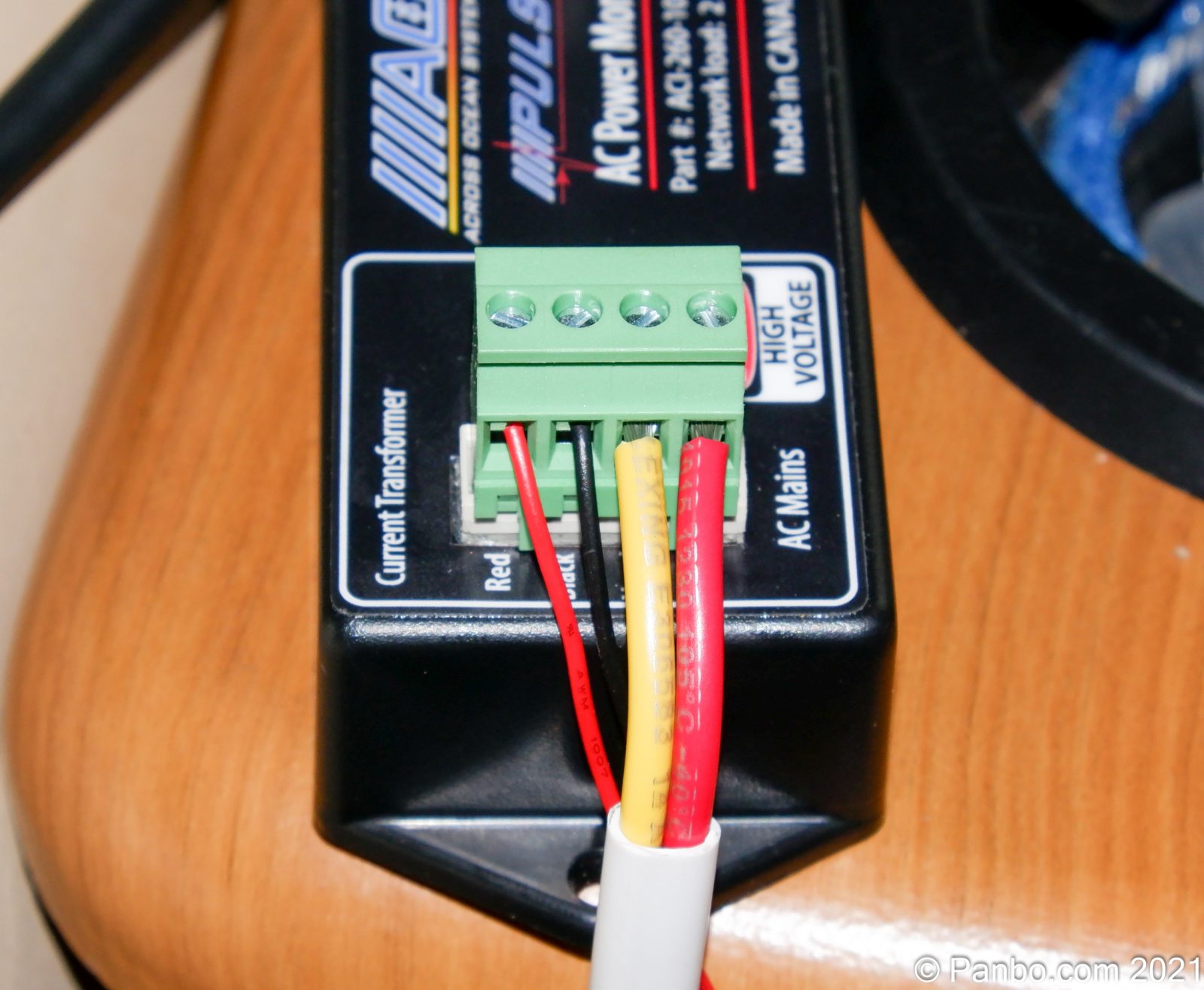
One of the challenges for any AC monitoring system is how to safely make the AC connections. AOS uses a four-position, pluggable screw-terminal for the connections. I was easily able to connect the two wires for the current transformer and a neutral and a hot for voltage and frequency measurements. And please, pardon the incorrect colors for neutral and hot. I’m traveling and don’t have the proper black and white wire. Incorrect colors aside, this connection (and plenty of others from other manufacturers) make me nervous. Although there should be very little current flowing through these wires, they still connect to a 120-volt power source. A small (like 0.25 or 0.50 amp) fast-acting fuse on the hot will ensure that an accidental short doesn’t make a big bang. But, even with a fuse in place, I’m going to want to figure out a way to protect this connection.
At $250 the AC Power Monitor is half the price of Maretron’s ACM100. The ACM100 supports split-phase and three-phase power but at a much higher price point. Plus, unless you already own a Maretron display or USB100 you will also need to purchase one of them to configure the ACM100.
Final thoughts
Power monitoring can give you a lot of insight into the operations of your boat. But, previously the options have been limited and expensive. AOS’ power monitors are cost-effective and offer simple installation. Based on what we’ve seen so far from Across Ocean Systems, I’m excited to see them continue to introduce new products.


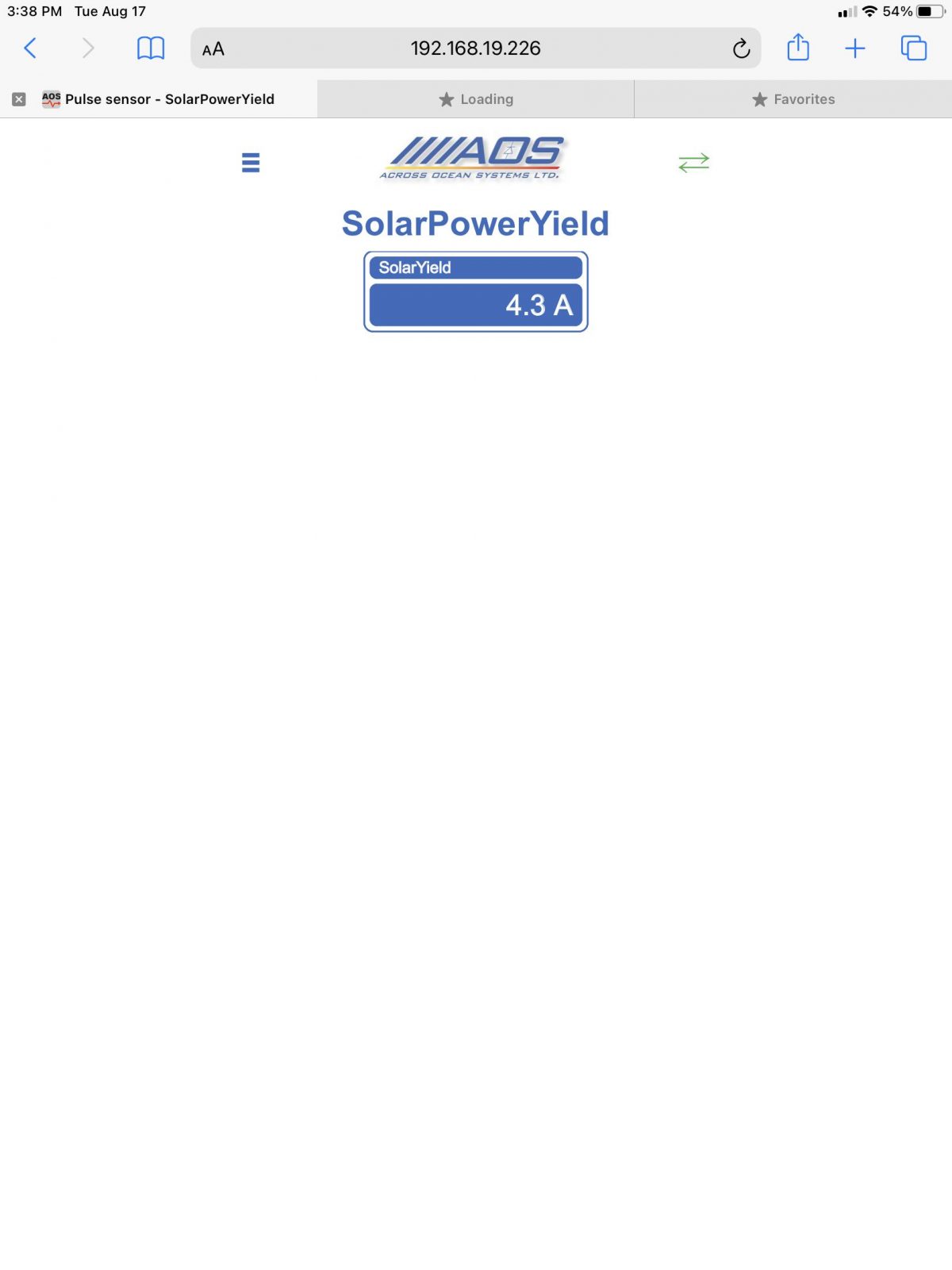
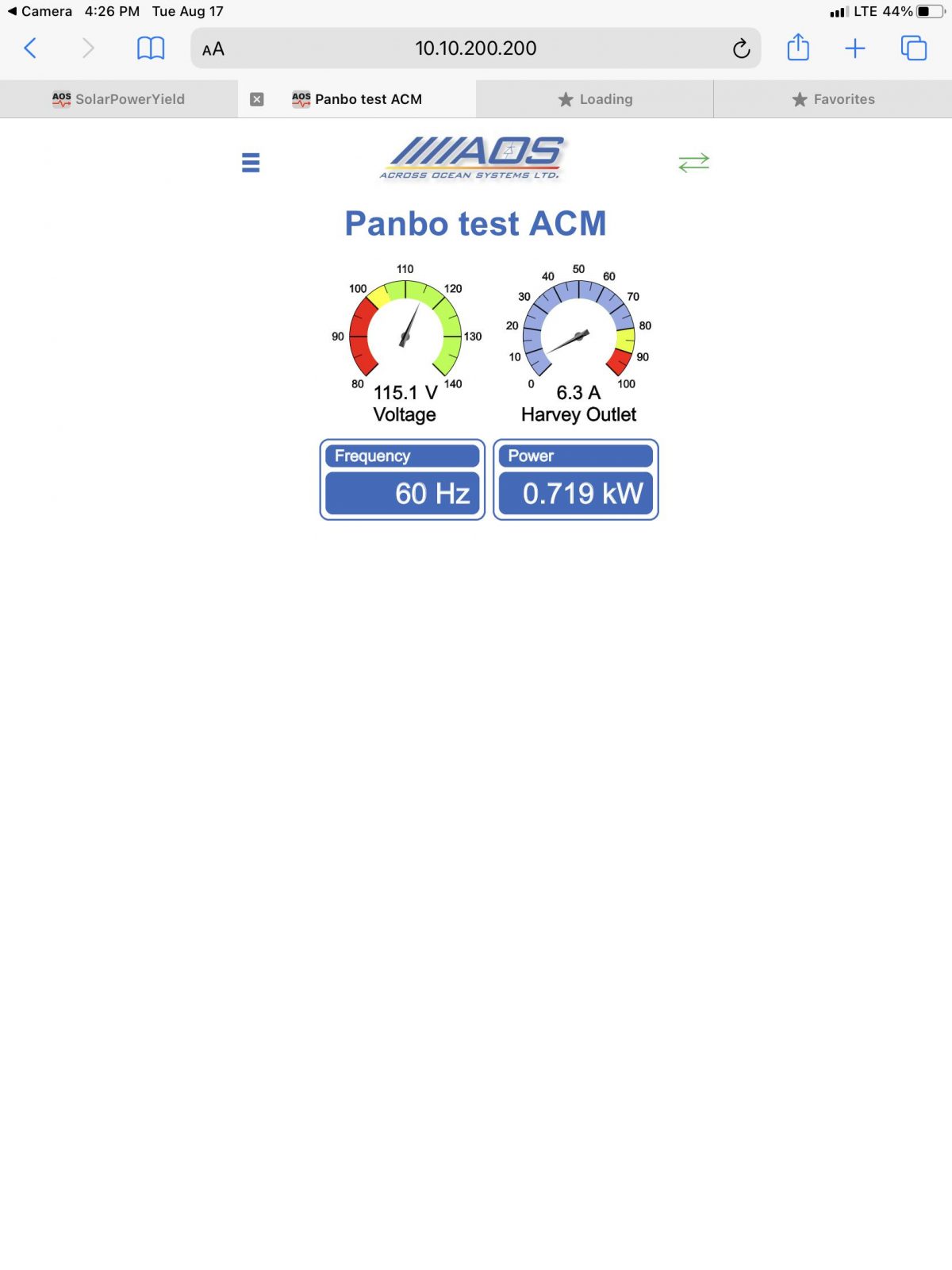


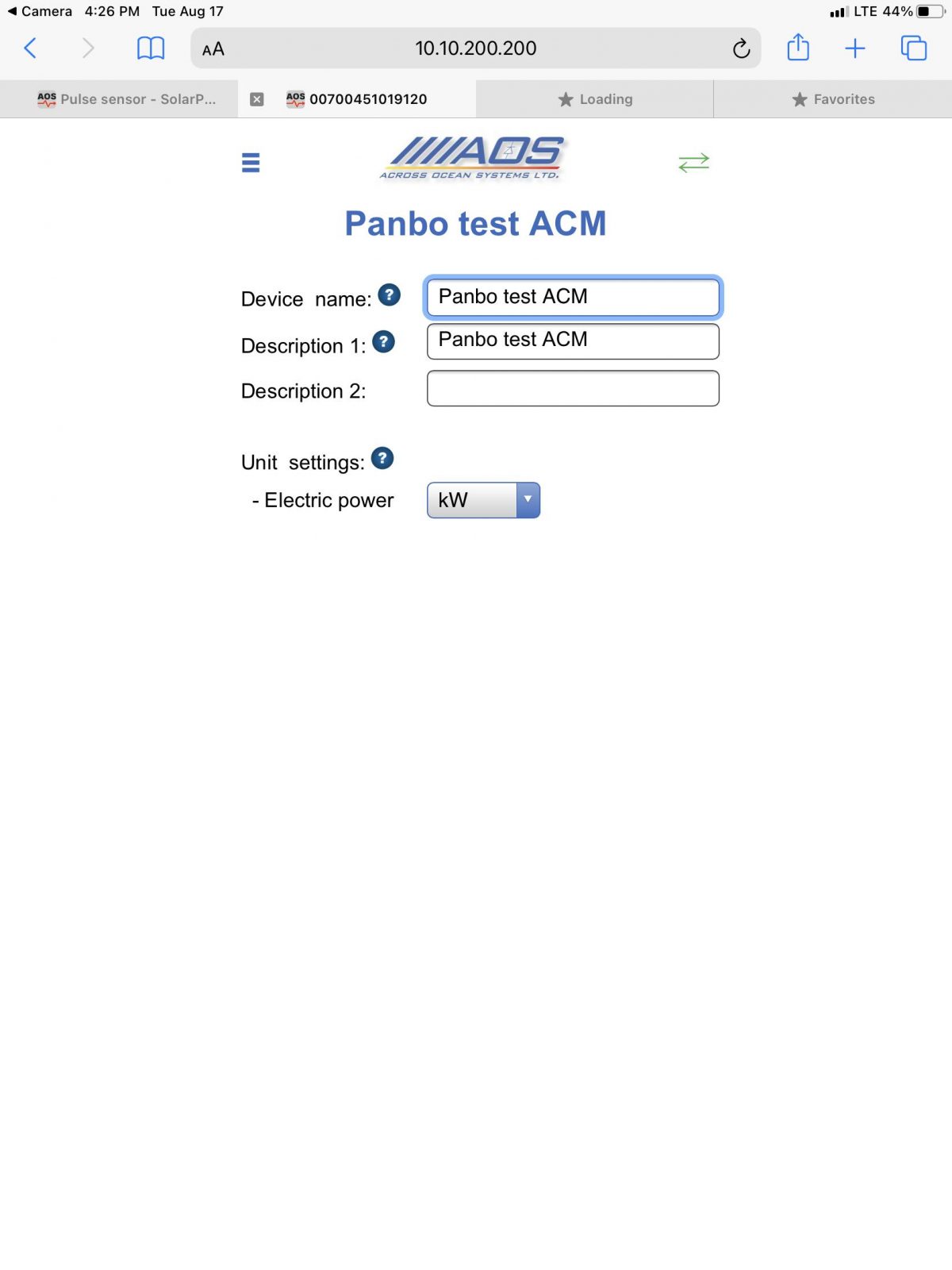
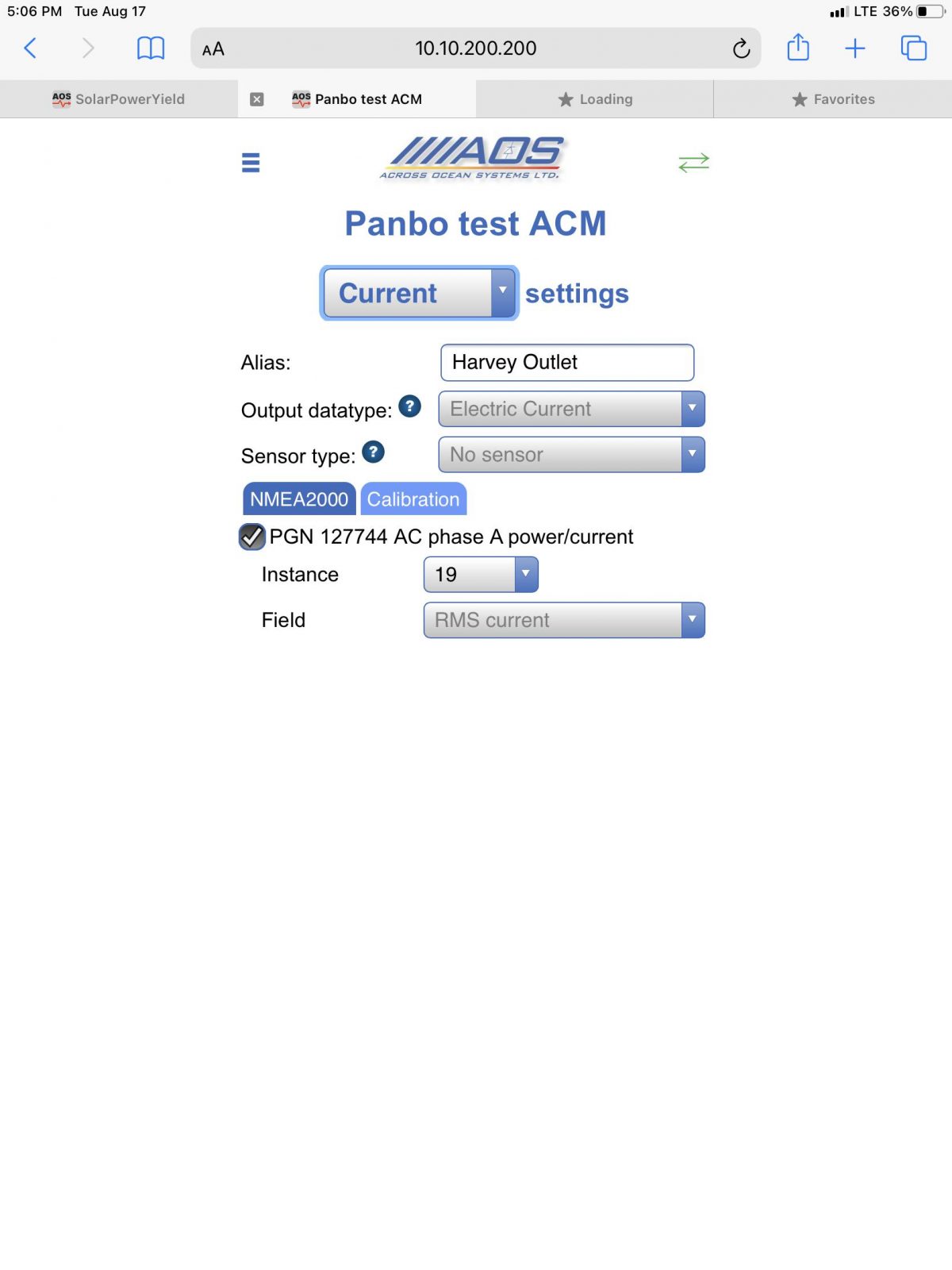


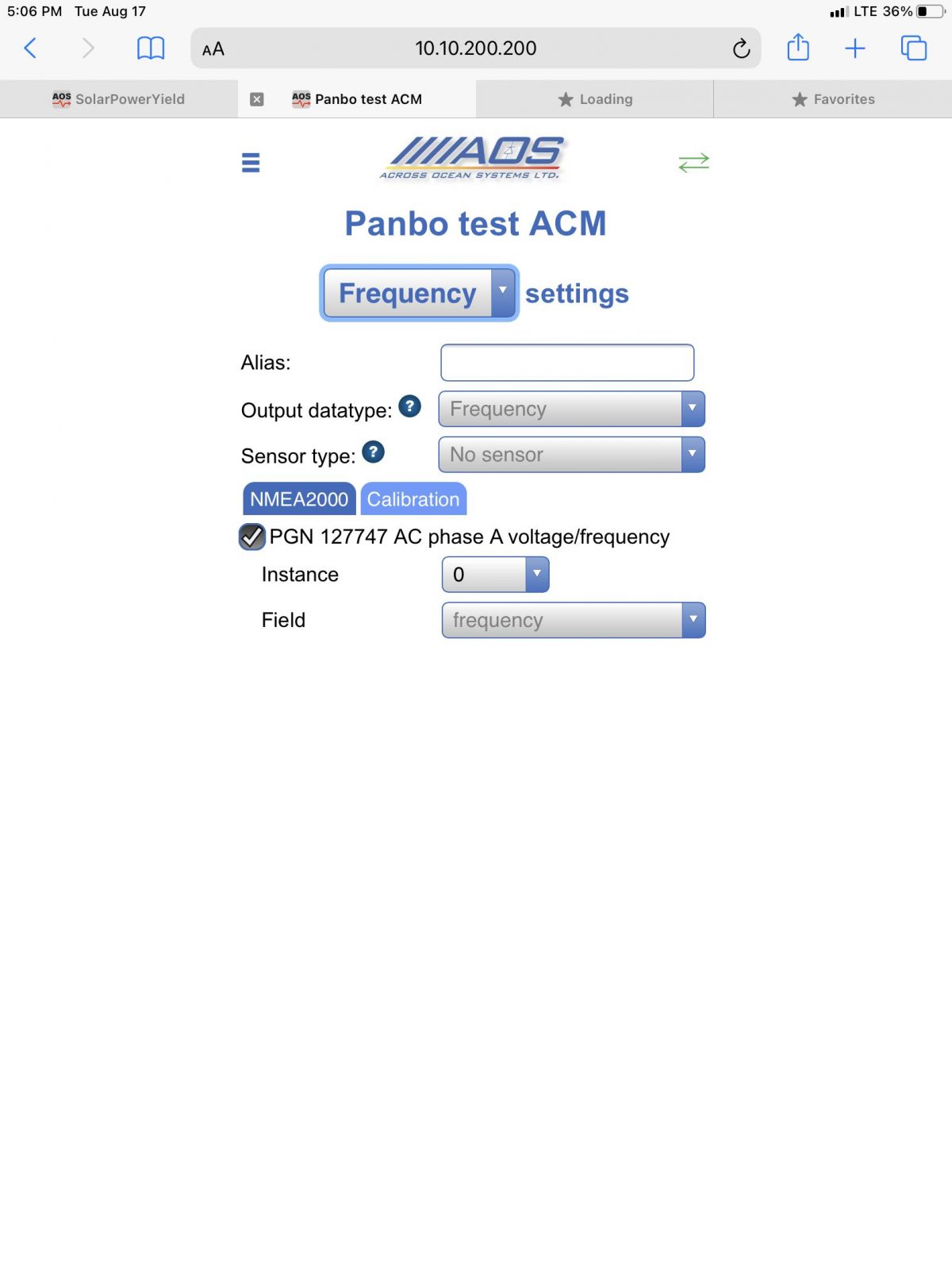

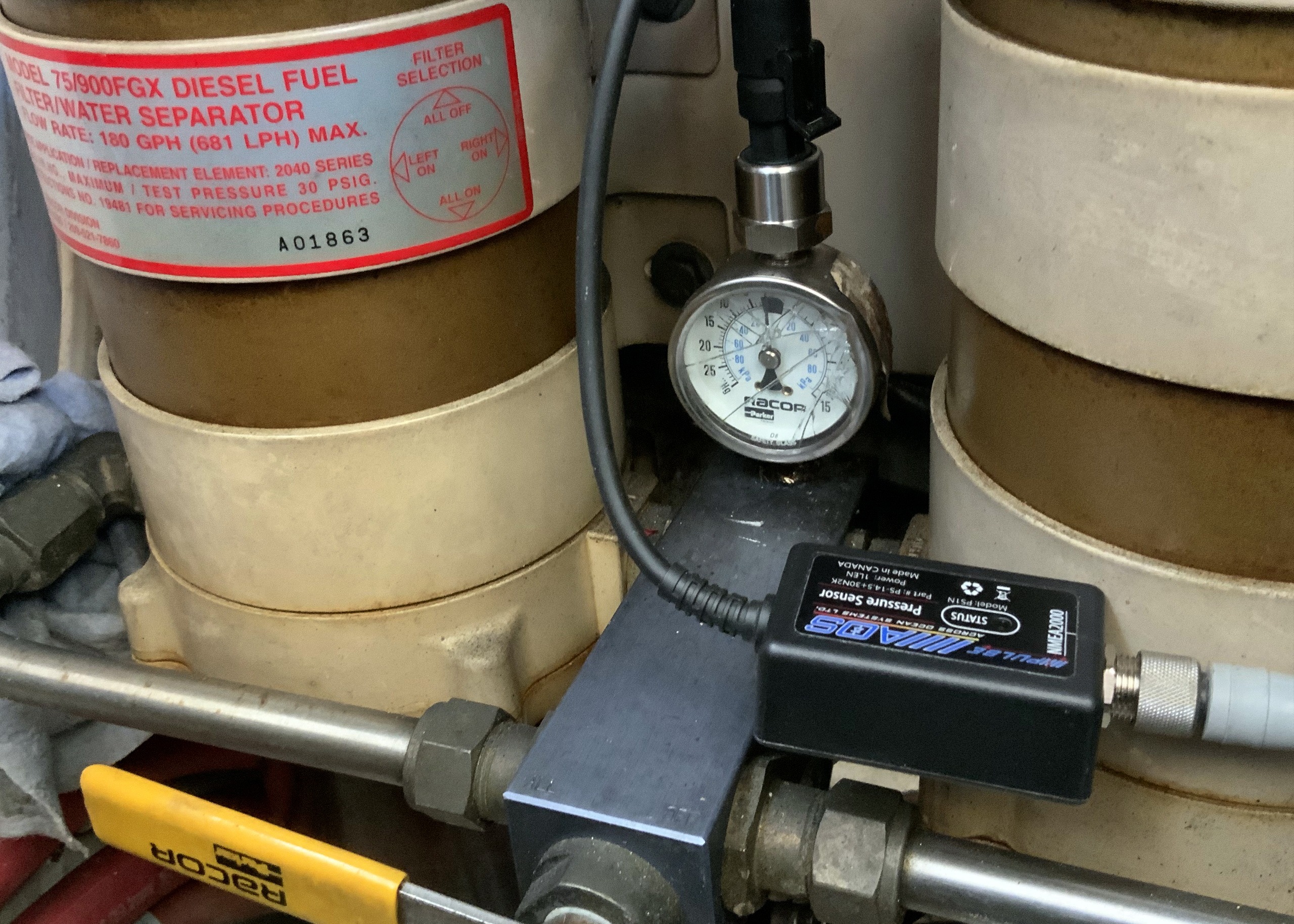










Good news that Gemeco is now carrying all AOS products, which means that U.S. dealer/installers now have better access to them, and more support:
https://myemail.constantcontact.com/Gemeco-Introduces-Across-Ocean-Systems.html?soid=1102674071007&aid=i1VXplBy1Lk
https://www.gemeco.com/Brands/Across-Ocean-Systems/Catalog/All
You left off one critical piece of information Ben. The PGN’s output by this device on the N2K network are not corrupted by ANY major brand MFD’s or electronics instrument displays. The data therefore sits on your N2K network unable to be displayed for any useful purpose.
By, “The PGN’s output by this device on the N2K network are not corrupted by ANY major brand MFD’s or electronics instrument displays”, do you mean to say that no major brand MFDs SUPPORT the PGNs? I know that Maretron’s DSMs, N2KView, and now MConnect all support the AC and DC detailed status PGNs. There are other routes like SignalK server. It is however also true that MFD support for less frequently used PGNs is frustratingly sparse.
-Ben S.
If you replace “corrupted” with “currently supported” my comment might make more sense. Yes, that is exactly what I mean. Actually, Maretron’s DSMs do not support the 127744 and 127747 PGN’s but the N2KView appears to if you want to fork out and set up another complicated system on your boat. Like most technical systems I am finding that theoretical potential N2K and the reality are quite different. Unfortunately, you often end up spending lots of money before you learn this lesson.
I would like to clarify my comments above. I have a number of Across Ocean Systems products installed on my boat and have found them to be functional, well-made and easy to use. I have also found the company excellent to deal with. The above post is specifically to do with a N2K compatibility issue and my frustration that the bigger players in the marine electronics market are dragging their feet on supporting all of the features of NMEA 2000.